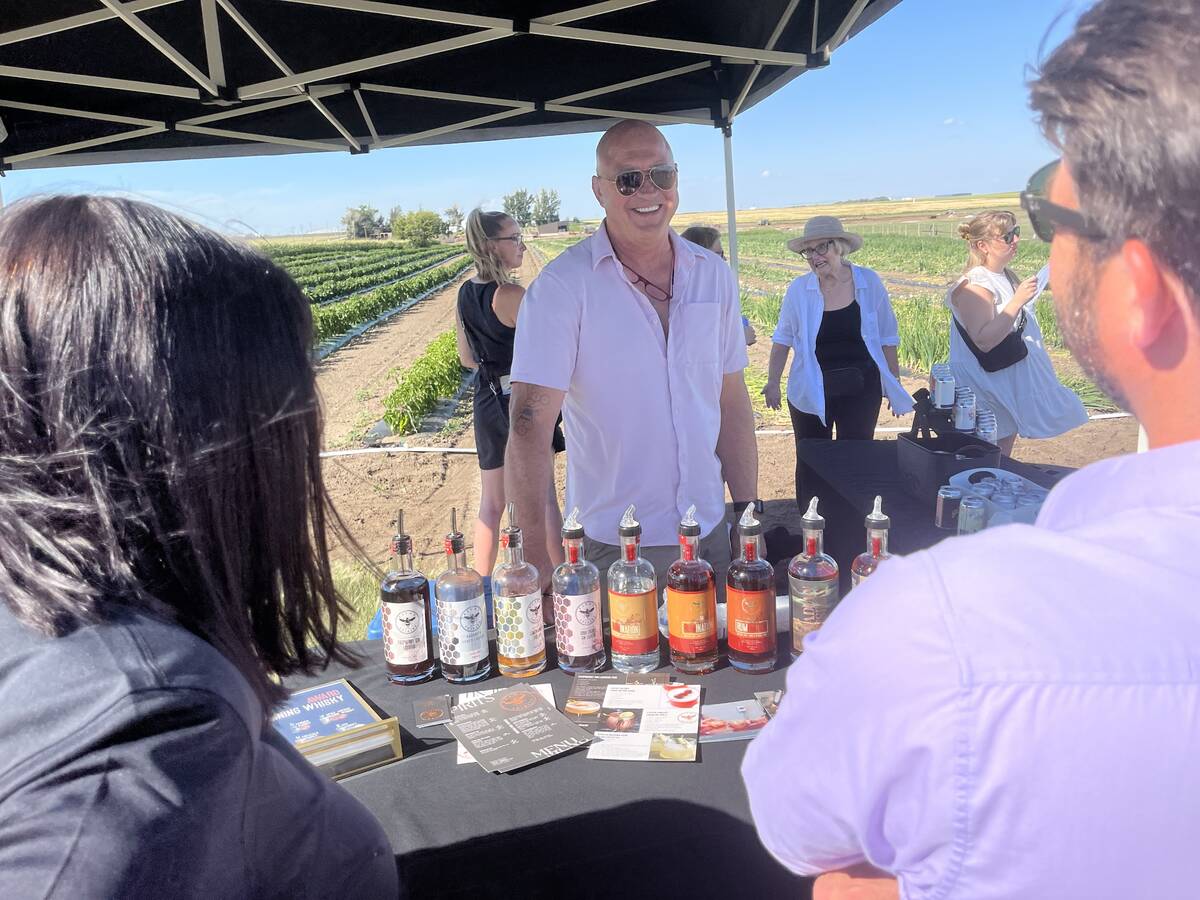Slightly more than two dozen people showed up at Brandon University last week for a symposium on retaining branch and short lines in rural communities.
Invitations were also sent to local MP Merv Tweed and provincial agriculture minister Rosann Wowchuk. Neither attended.
National Farmers Union president Stewart Wells said the disappointing turnout shows that many farmers and their elected representatives either don’t realize what the loss of rail service means or don’t think that it’s within their power to save it.
“Farmers seem to be no better than any other part of society in that they don’t want to deal with something until it hits them square between the eyes,” he said. “And lots of times, by then, it’s too late.”
Read Also

From farmer to award-winning distiller
Pivot Spirits showcases transition from farmer to distiller with provincial award-winning results in Alberta for Lars Hirch
Unlike Saskatchewan, where farm groups have preserved at least some short lines, apathy continues to reign in Manitoba, despite the imminent loss of rail service in many communities.
Examples include a 128 kilometre stretch of the Miami line from Morden to Killarney, a 101 km section of the Glenboro line from Rathwell to Page and 13 km from Carman to Graysville.
Manitoba NFU co-ordinator Fred Tait said farmers in areas facing the loss of local rail service should be putting pressure on their elected representatives to defend their interests.
“Their constituents are not beating on them over this issue,” he said.
“Politicians, if there’s smoke or they see a benefit, will show.”
Many Manitoba producers regard the loss of rail links as inevitable, he added.
“They feel that they can’t do anything to save it, but that contradicts the whole history of their communities and their fathers and their grandfathers, who said, ‘we’re going to have some control here’ and built the elevators.”
Wells said the success of many Saskatchewan farm groups in preserving local rail lines shows what determined farmers and communities can accomplish, but federal policies have made it easier for the railways to cut marginally viable branch lines loose.
“It’s the federal government that has jurisdiction in a lot of these areas. They negotiate with the railways and bring in legislation that allows them to tear up branch lines.”
He said the federal Conservative government is continuing a process that stretches back more than a decade to the days of Liberal rule.
“We were talking about this 10 years ago. We argued back then that it is crazy to take out these branch lines, put that grain on trucks and create all this extra carbon,” he said.
“Now, you can’t listen to the news without hearing global warming or climate change in every story. It’s going to be an election issue.”
The federal government should get in step with public opinion, he added, and start providing incentives for loading producer cars, preserving existing infrastructure and keeping branch lines viable.
“It would be a small but concrete step towards a sustainable position on global warming,” Wells said.
With the increasing possibility that a carbon tax might be levied on farmers, the unfairness of the situation is becoming clear.
“You have now ripped out his branch lines so he’s hauling grain 10 times as far as he used to – that’s a cost – and then you’re going to hit him with a carbon tax because he’s using more fuel?”
Tait added that farmers in Manitoba have not “connected the dots” regarding the future of rail service in the province, especially with rising fuel costs now considered a certainty.
“We’re likely going to lose all branch lines south of the CP main line,” he said.
“We’ve got an area 200 miles long and 75 miles wide where all the production is going to have to come out by road to this rail line, and all the inputs and fertilizer are going to have to go in by truck. We’re going to pay the costs on both sides of that.”
Les McEwan, who farms near Miami on the Morris to Hartney subdivision, said that since the line began being torn up for its $10 million salvage value, his trucking costs have risen by 20 cents per bushel.
The rails, some of which are a quarter mile long, are being sold for mere pennies on the dollar compared to the original construction cost.
“We fought to get that line back into the permanent network back in the late ’70s and early ’80s. That got us into the year 2000,” he said.
“But then, when you think you’ve got it into the permanent network, 20 years later you find out it’s going to go anyway. How many times do you expect farmers to go out there and fight when they are up against big business?
“You can go into government and scream all you want, but if they come in with a million dollar cheque, nothing says I love you like a million dollar cheque.”














